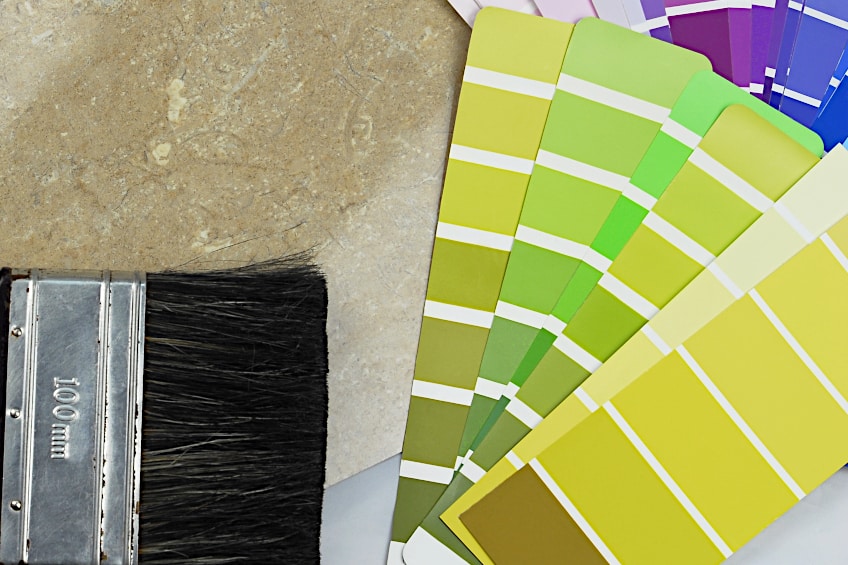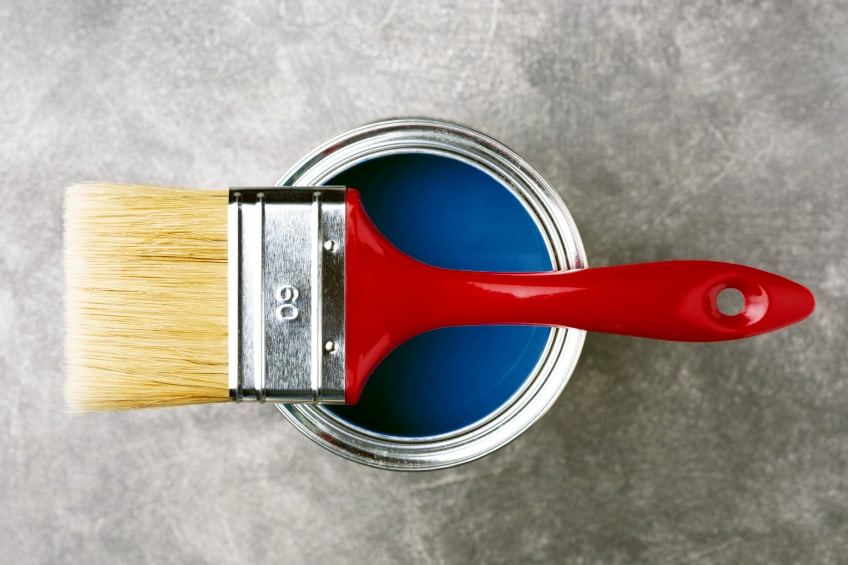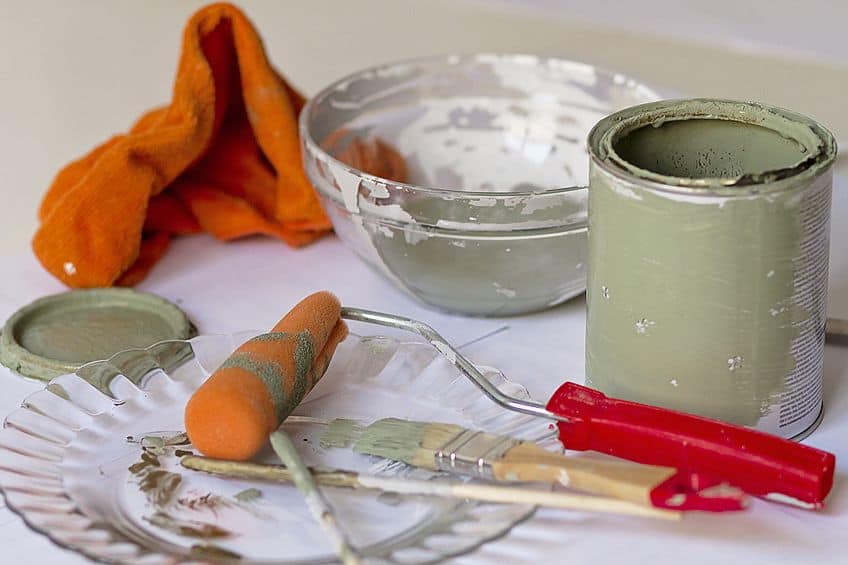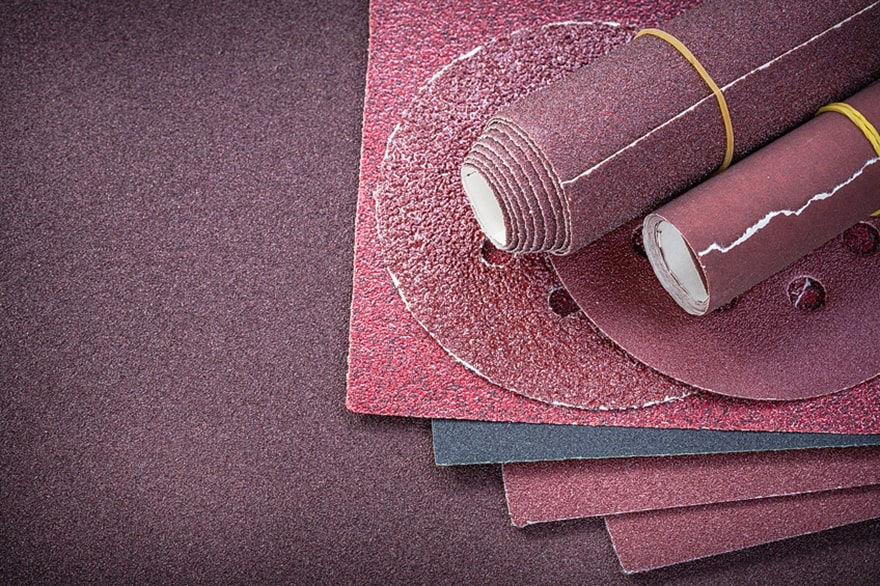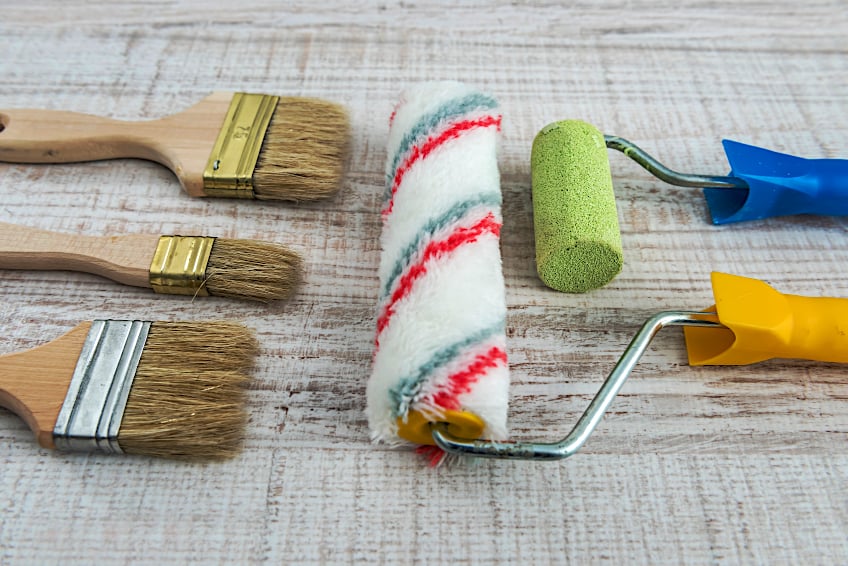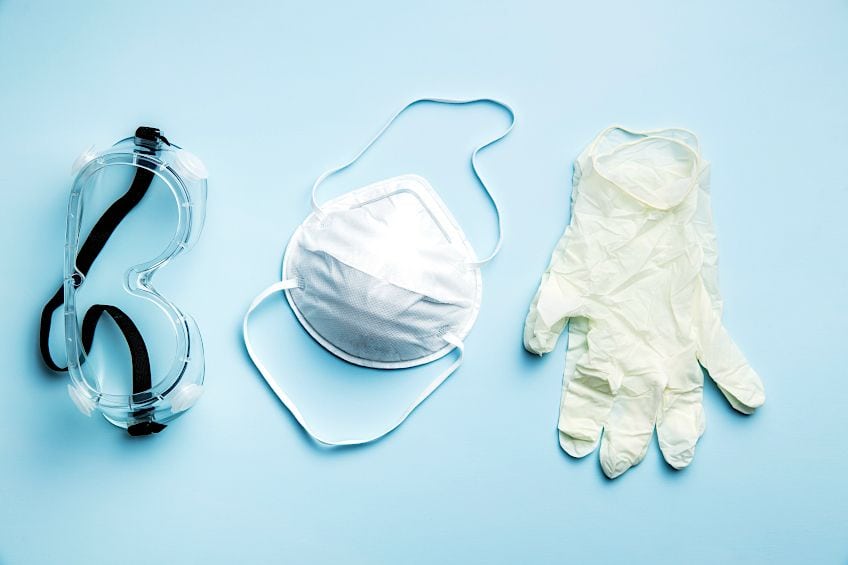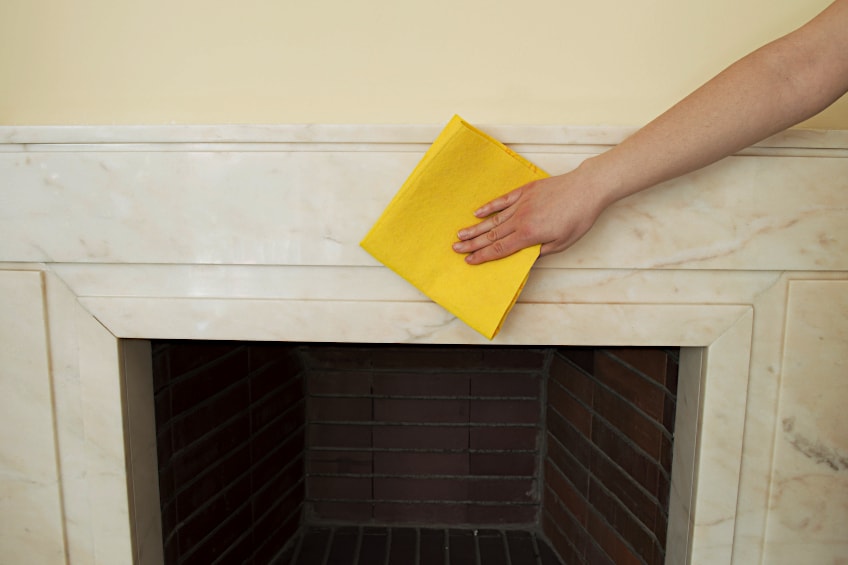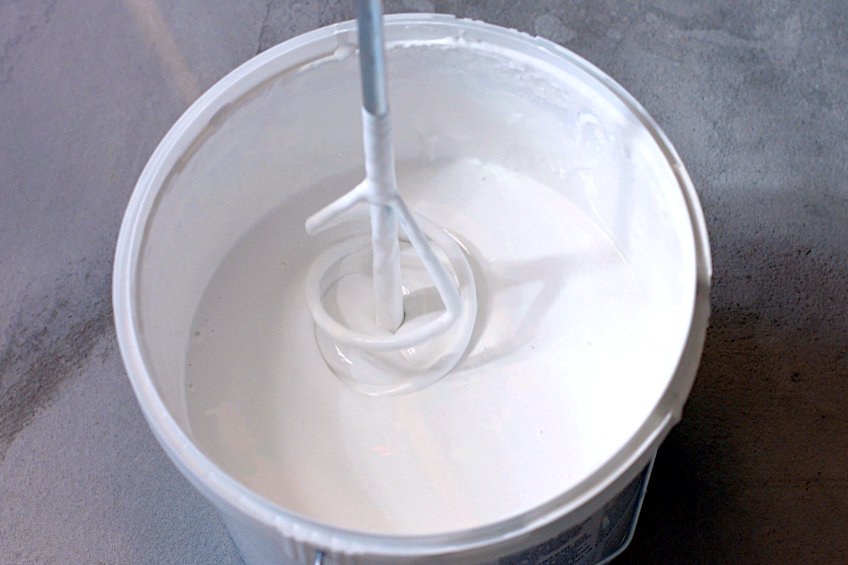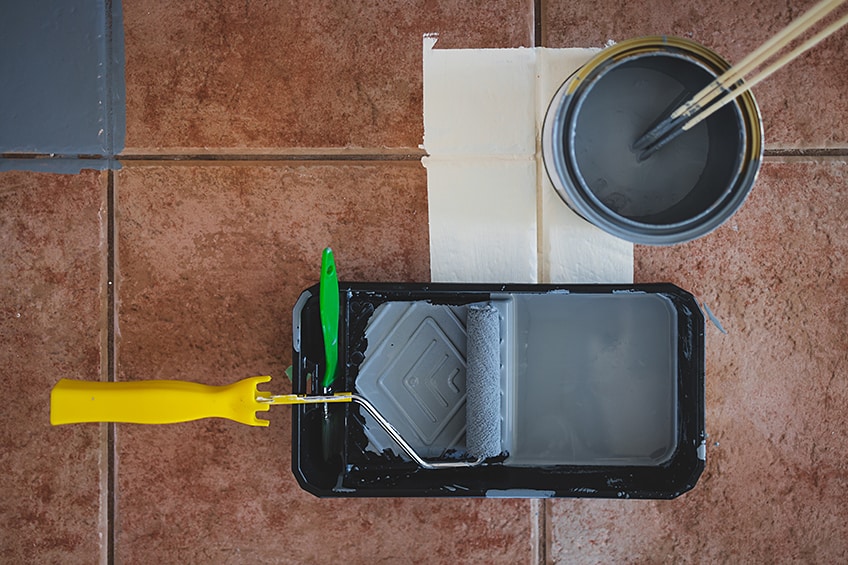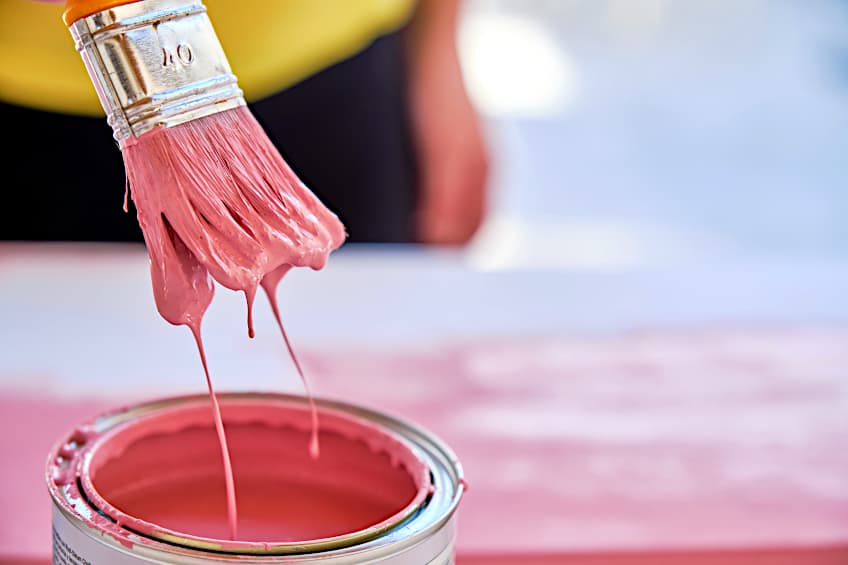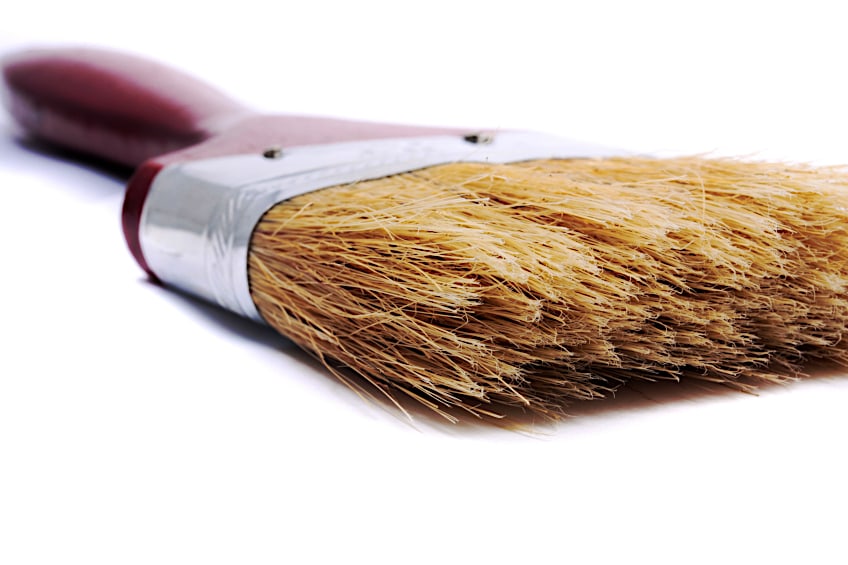How to Paint Marble – Porous Stone Painting Guide
This post may contain affiliate links. We may earn a small commission from purchases made through them, at no additional cost to you. You help to support resin-expert.com
Marble has always been one of the fanciest materials money can buy. However, value and personal preference are two vastly different things. Marble is also a very porous stone that can pick up nasty stains over time and end up looking quite grubby. If you have marble installed, you might want to paint over it as your tastes change. However, can you paint marble? Let’s have a look at what options you have if you’ve had enough of marble slate surfaces in your home or office.
Table of Contents
Can You Paint Marble Surfaces?
Can you paint over marble? Absolutely! Painting over marble is easy and we’ll show how to do just that in a few simple steps, just be sure that painting over your marble surface is really what you want to do. While it might seem that marble is unpaintable due to how smooth it is, at the end of the day marble is simple stone, and like most other stone surfaces, it can definitely be painted.
Painting marble can be challenging though. The challenge lies primarily in preparing the surface instead of actually applying the paint.
That being said, preparing your marble surface correctly should allow you to paint it without any hiccups. Painting marble can be done with a sprayer, brush, or roller depending on your preference.
If you’re feeling a bit nervous about painting your marble surface, don’t be. While painting marble is a bit different from painting softer materials like wood and drywall, similar techniques and tools are applicable. Making a few adjustments to the preparation and application process should ensure that you have a problem-free painting process.
How to Paint Marble Surfaces
Looking at your marble surface and imagining what it could look like when it’s painted is one thing, but actually painting it is another. The most consistently successful method is preparing your space, gathering your tools, preparing your marble, and then getting to painting. To help you along, you will find a checklist of things you will need as well as a guide showing you how to paint marble.
Tools and Materials
Painting marble requires the use of a few tools and materials. These aren’t too different from tools you’d use to paint wood, plastic, or drywall, but there are a few exceptions. To ensure you have everything you’ll need, here is a list of things you should have on hand when attempting to paint a marble surface.
- Paint
- Primer
- Sandpaper
- Painter’s Tape
- Rollers and Brushes
- Cloths and Cleaning Products
- Personal Protective Gear
Paint
You have a variety of paint types at your disposal for painting marble. Since marble is both extremely smooth and porous most paint types will require a primer. If you want to skip that step, then you can opt for chalk paint. Not only will it provide the color you need but it also requires far less preparation to apply compared to other paints. Keep in mind though, that you will need to apply a wax sealer to chalk paint afterwards to protect it.
Primer
As we mentioned previously, you can use other paint types aside from chalk to paint your marble surfaces. Regardless of what paint type you choose, you should ensure that you use the corresponding primer.
Using the incorrect primer could result in the paint failing to stick to the surface, leaving you to remove the paint and start the process all over again.
In addition to the regular primer you would use on other surfaces, you will also need something called a clear epoxy primer to ensure your paint job is smooth to reflect the inherent texture of the marble. Both primer types are readily available at most home improvement stores and are easy to use too.
Sandpaper
A common error you could easily make when painting decorative marble surfaces is not sanding it. Not only will this smooth out any imperfections in the surface of your marble, but it will also ensure that the glossy layer is removed.
A thorough sanding will ensure your primer adheres to the marble and give you the ideal surface to paint.
When priming marble surfaces, you have the choice of sanding manually (by hand) or with a power sander. We recommend a small, handheld power sander or for large surfaces and good old-fashioned sandpaper if your surface is relatively small. Regardless of the tool, 200-grit sandpaper tends to be the best tool for the job when it comes to marble.
Painter’s Tape
Painter’s tape is a must-have regardless of the material you are painting. Painter’s tape is used to seal up any areas of your workpiece that you don’t want paint getting on, so be sure you get a good quality tape so that none of your paint leaks through.
Keep in mind that marble surfaces tend to be pretty smooth and slippery, so ensure your tape is tightly pressed down once applied.
Roller and Brushes
While marble can be painted with a sprayer, it is most commonly painted using a good old-fashioned brush and roller. That being said, getting a good quality brush and roller set that won’t over or underapply your paint is a good idea. If you have a decent amount of experience in painting, you should be able to get away with using a generic brush and roller set.
Is there a specific type of roller and brush you need to use when painting marble? Not really, but generally, a polyester roller cover and a soft-bristled brush produce good results on marble surfaces. If you can’t get your hands on either of these, generic brush and roller types for stone surfaces should work just fine.
Cloths and Cleaning Products
Painting marble can be really easy if your surface has been prepared correctly. One of the most important parts of the preparation process is ensuring your marble is clean before it is smoothed and primed.
Using products designed to clean decorative stone and some clean cloths should ensure you get the job done quickly and easily.
Personal Protective Gear
Both the painting and preparation process can produce a lot of dust and fumes, so it’s a good idea to protect your hands, eyes, and respiratory system. The best way to go about this is to use a face mask, gloves, and some eye goggles. Chalk paint doesn’t contain a lot of VOCs (volatile organic chemicals) but it can get pretty messy and could irritate your skin if you get some on your hands or face.
Painting Marble Surfaces and Countertops
Once you have everything you need you should begin the preparation and painting process. Remember that marble isn’t like brick and mortar, you’ll have to paint slowly and pay attention to detail while painting. To help you achieve the best paint coating for your marble surface, here’s how to prepare your marble surface and apply your paint correctly.
Prepare Your Workspace
Before you begin preparing your workpiece you should prepare your workspace. What do we mean? Well, since you’ll be painting it’s a good idea to lay down a tarp or some old newspaper to ensure the floor of your workspace doesn’t get damaged.
Once your immediate work area has been secured, remove any furnishes that could get paint splattered on them.
Now that your flooring and furnishings are safe, it’s time to prepare the rest of your space. Even though milk paint doesn’t contain VOCs, ensuring that you have good airflow in your work area can help dissipate any fumes produced during the curing process and allow your paint to dry quickly. The best way to do this is by creating a constant flow of air in and out of your workspace.
Clean Your Workpiece
Preparing your workpiece can take some elbow grease, especially if it’s big. However, it’s one of the most important parts of the preparation process so it’s always best to put in a bit of extra effort. To clean marble surfaces you’re best off using some degreaser or some regular soap if you can’t get your hands on some.
Scrub the surface of your marble workpiece thoroughly using a clean cloth. Be sure to rinse and reapply regularly if you are using a particularly strong degreaser to avoid damaging the surface of your workpiece. Remember, the whole point is to ensure the surface is as dirt-free as possible, so be thorough and work at a decent pace. Once you’re done, allow your workpiece to dry completely before proceeding to the next step.
Smooth Out Any Imperfections
Imperfections are common in many stone surfaces, especially ones that have been installed for a long time. Before you prime the surface, you’ll need to remove these imperfections using sandpaper. Sanding marble surfaces is simple, all you need to do is sand the surface in a circular motion to ensure an even uninterrupted finish.
Begin at one end of your workpiece and work methodically toward the other, being careful not to miss any spots and ensuring that the sanded areas overlap with one another nicely.
The goal of the sanding process is to remove any protective glossy coatings and to create a smooth, even surface for the primer and paint once applied. Once you are done sanding, clean off any particles from the surface using a clean cloth and tape up any areas you won’t be painting before moving on to the next step.
Apply the Bonding Primer
Bonding primer is the first layer of primer you need to apply when painting marble surfaces. Bonding primer essentially ensures that the surface of your workpiece has enough adhesion for the paint. To apply bonding primer, open up your container and stir it really well.
Next, dip your paint brush into your primer and begin priming your marble surface. Start at the edges using your brush, and then tackle the primary surface using your roller. Using the same strategy, you did while sanding, choose a point to start at and apply your primer until you reach the other end.
Bonding primer should be applied as thoroughly as possible, as applying too little will result in your paint failing to adhere correctly. Once the bonding primer has dried, move on to the next step.
Apply the Epoxy Primer
Epoxy primer is one of the best coatings for achieving a glossy and consistent paint job on marble. Epoxy primer can be applied much in the same way that bonding primer is, but instead of shaking the container, you’ll be better off giving it a good stir when you pop it open. Once the primer has been mixed well, get some on a brush and apply it to the surface of your workpiece.
You could use your brush to tackle the entirety of your workpiece when working with epoxy as it is quite thick.
As you did with your initial coat of primer, work your way from one end to the other until the entire workpiece has been coated. Not only does epoxy primer ensure a glossy finish, but it will fill any weaves in the surface too. Allow the primer to dry as directed before moving on to the next step.
Apply Your Paint
Now for the paint. Painting marble isn’t that much different from priming it, just shake up your paint container and pop it open. If you have a painter’s tray, start by pouring some paint into it and then getting some on your brush. Using your brush, begin by cutting in the edges of your workpiece (if it has any) along the areas you have taped up.
Now that the edges have been cut in, it’s time to tackle the main surface. Dip your roller into the paint tray and roll it along the ramp to remove any excess paint. Next, pick an end of your workpiece to start at and begin painting the surface, applying your paint evenly as you work your way to the other end. Keep this process going until your marble is completely coated in paint and you are happy with the look and feel.
If you’re wondering how many coats to apply it really is up to you. More coats will deepen the color, but it will take longer for your workpiece to dry and obscure the texture of your marble even more.
However, if you are using a thinner paint type, applying more than one coat will increase the durability of your coating.
Types of Paints for Marble Surfaces
Whether you are painting marble countertops or tiles, there are other paint types aside from chalk that can be used to breathe life into old stone surfaces. So that you know what your options are, we’ve listed a few of the other paint types you can choose from when painting marble and how they affect the surface once applied.
Acrylic-Based Paint
While chalk-based paint is arguably the most popular option when painting marble surfaces, it’s not without its drawbacks. Chalk-based paints produce a matt finish, and they aren’t always ideal for those with sensitive sinuses either. Acrylic-based paints have none of these characteristics and are relatively cheaper when compared to chalk-based paints.
Acrylic-based paint may not be ideal in the long run, as it doesn’t last on marble quite as long as other paint types.
If you are going to use acrylic paint on marble, keep in mind that it’s better suited for surfaces that are out of direct sunlight and don’t take on too much direct heat throughout the day.
Water-Based Paint
Water-based paints are another great alternative to chalk-based paint. Like chalk-based paints, water-based ones contain little to no VOCs and they’re even easier to apply! Water-based paints are readily available and inexpensive, making them a popular choice for a number of DIY projects especially for less robust surfaces.
Water-based paints get great coverage thanks to their thinner viscosity, which means it’s a great choice for large marble surfaces. They are also available in various degrees of durability, with more robust options being able to withstand things like impact, abrasion, and even foot traffic really well.
If you do choose water-based paint you should know that you might need to apply more than one coat to achieve the desired result.
Oil-Based Paint
Oil-based paints are another great choice If chalk paint doesn’t quite suit your needs. Oil-based paints have a thicker viscosity and tend to do really well when they’re applied to marble surfaces. Oil-based paints tend to provide a vibrant color and smooth texture, but they can be a bit more expensive when compared to other paint types.
Thanks to the thickness of this paint, you won’t have to apply many coats to get the job done.
However, oil-based paints do contain a lot of VOCs and are quite flammable. They can also produce a bunch of nasty fumes while degassing, so be sure to wear a mask and have adequate ventilation if you intend to use this paint type.
Tips for Painting Marble Surfaces
While choosing a paint for marble is important, knowing how to use your paint and how to deal with marble surfaces will serve you well too. To shorten the learning curve for you we’ve listed a few tips and tricks you can implement to ensure that your marble painting job goes as smoothly as possible with minimal mistakes.
Sand Chalk Paint Once Applied
As we mentioned previously, using chalk paint for marble surfaces is the best choice. If you want to ensure the chalk paint finish is extra smooth, you can sand your chalk finish between coats to improve the texture.
If you do this, remember to remove any chalk paint dust before applying any additional coats.
Don’t Use a Hard Bristle Brush
While using chalk paint for marble surfaces is an objectively good idea, how you apply said chalk paint is important too. Hard brushes can make certain types of paint like chalk paint extremely difficult to apply and cause it to be distributed unevenly. To ensure your paint is applied as intended we recommend using a feather brush or similarly soft bristled brush.
Allow Chalk Paint Lots of Time to Dry
Using chalk paint for marble countertops is very common, but if you haven’t worked with chalk paint before you might misjudge its drying time. When painting frequently used surfaces like countertops it’s best to allow the paint to dry and cure for a full 16 to 24 hours to ensure that no loose chalk dust or wet paint remains.
That’s how you can breathe life back into your old marble surfaces. Remember not to rush when painting marble surfaces, and to choose a paint that suits the application of your workpiece as well as your personal style. Also, keep in mind that chalk paint can produce a lot of dust, so be sure to wear your face mask and eye goggles using it.
Frequently Asked Questions
Can You Paint Marble Tiles?
If you can paint marble countertops, can you paint marble tiles too? Yes, marble tile can be painted, but if your tile will be used for flooring, you might want to seal the surface to ensure that your paint doesn’t get scuffed up by foot traffic over time.
What Is the Best Paint for Marble?
There are many paint types available for marble surfaces. One of the most popular is chalk-based paint, as it easily adheres to the surface of marble and produces an interesting texture once dried. Other popular paint types for marble include acrylic, latex, and oil-based paints.
What Is the Best Way to Apply Paint to Marble?
While finding paint for marble surfaces is fairly easy, figuring out how best to apply it can be challenging. Generally, marble is painted using a brush or roller, but a sprayer can also be used if your workpiece is particularly large.


